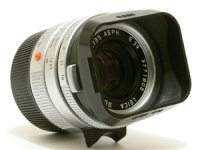kennethcooke
Established
I read many comments on the virtues of new Leica lenses v older models. I have recently bought a 35mm f2 Summicron asph to complement my newly acquired M6 classic both of which are second hand in mint condition but he Summicron is latest generation.
It would seem to me that film emulsions and film manufacture have moved on with time and I assume that Leica technicians consider this when they design their lenses. That being so would it be safe to assume a modern generation lens will give the best performance with modern film stock?
If this is the case what would be the justification in buying earlier lenses other than price point. Or am I missing something? I mention this in passing as I am considering a 50mm lens to complement my system. If the above scenario is fact then I can only assume my ideal choice to be a 50mm Summicron?
I am sorry it is sort of three questions in reality
It would seem to me that film emulsions and film manufacture have moved on with time and I assume that Leica technicians consider this when they design their lenses. That being so would it be safe to assume a modern generation lens will give the best performance with modern film stock?
If this is the case what would be the justification in buying earlier lenses other than price point. Or am I missing something? I mention this in passing as I am considering a 50mm lens to complement my system. If the above scenario is fact then I can only assume my ideal choice to be a 50mm Summicron?
I am sorry it is sort of three questions in reality






